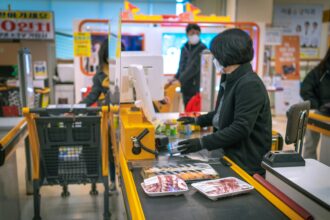Trump’s South Africa Meeting Sparks Global Outrage over Misinformation
In a highly controversial meeting at the White House, former President Donald Trump presented what he claimed was proof of a “white genocide” occurring in South Africa. The Oval Office meeting with South African President Cyril Ramaphosa was marked by tension, misinformation, and a series of misleading visuals that sparked global criticism.
Misattributed Image Fuels False Genocide Claim
Trump held up an image, declaring, “These are all white farmers that are being buried,” while referencing an article that was meant to support his claims. However, the image in question had no connection to South Africa. It was actually a screenshot from a Reuters video dated February 3, depicting humanitarian workers in Goma, Democratic Republic of Congo, handling body bags following violence involving M23 rebels.
Reuters Fact-Check Debunks Viral Claim
Reuters’ fact-check team quickly debunked the authenticity of the photo’s claimed origin, revealing that Trump’s supposed evidence of white South African mass killings was pulled from an unrelated African conflict. The White House did not respond when Reuters requested comment on the matter.
False Graveyard Claims from Misleading Memorial Video
Further into the meeting, Trump showed video footage purportedly confirming genocide against white farmers in South Africa. The video claimed to show thousands of white graves marked by crosses. However, the location—on a highway between Newcastle and Normandein—was not a graveyard. It was a memorial set up by activist Rob Hoatson in response to the murder of two Afrikaner farmers.
Hoatson Refutes Trump’s Interpretation
“It was a memorial. It was not a permanent memorial that was erected. It was a temporary memorial,” said Hoatson in a statement to the BBC, further undermining Trump’s narrative.
This memorial, although somber and symbolic, was wrongly cited by Trump as evidence of systemic extermination. It became part of a broader effort to promote his offer of “refuge” to white farmers, which has stirred outrage in South Africa’s political circles, who firmly deny the existence of such a genocide.
Malema Video Misrepresented as State Policy
The video included in Trump’s presentation also showcased controversial EFF leader Julius Malema, a known opposition politician, wearing his red beret and leading chants such as “cut the throat of whiteness” and “Kill the Boer, kill the farmer.” Trump falsely introduced Malema as a government official, misleadingly portraying his words as official state policy.
Malema’s Role in Opposition Mischaracterized
Malema’s Economic Freedom Fighters (EFF) party, while vocal, only secured 9.5% of the vote in the previous year’s elections and ranks fourth in South African political standings. He remains a polarizing figure advocating for radical economic reforms such as land redistribution and nationalization.
Ramaphosa and Steenhuisen Reject Extremist Rhetoric
President Ramaphosa and his team were quick to reject Malema’s rhetoric during the meeting. Agriculture minister John Steenhuisen, from the Democratic Alliance, told Trump that the coalition government was specifically formed “to keep these people out of power.”
Diplomatic Visit Undermined by Conspiracy Claims
Ramaphosa’s visit to Washington was meant to ease diplomatic tensions after Trump’s months-long criticism of South Africa’s policies, particularly around land ownership and alleged mistreatment of its white minority—a claim South African authorities vehemently reject.
Global Criticism Highlights Need for Responsible Discourse
This incident highlights how misinformation and emotionally charged visuals can distort complex international issues. Trump’s reliance on misattributed media and conspiracy theories echoes a far-right narrative that lacks factual basis but garners attention and political mileage.
South African Government Calls for Fact-Based Dialogue
The South African government continues to challenge these claims, calling for more responsible discourse and factual reporting on issues as sensitive as land reform and racial relations. As digital misinformation becomes increasingly prevalent, fact-checking remains essential in political dialogue, especially when it crosses international lines.






